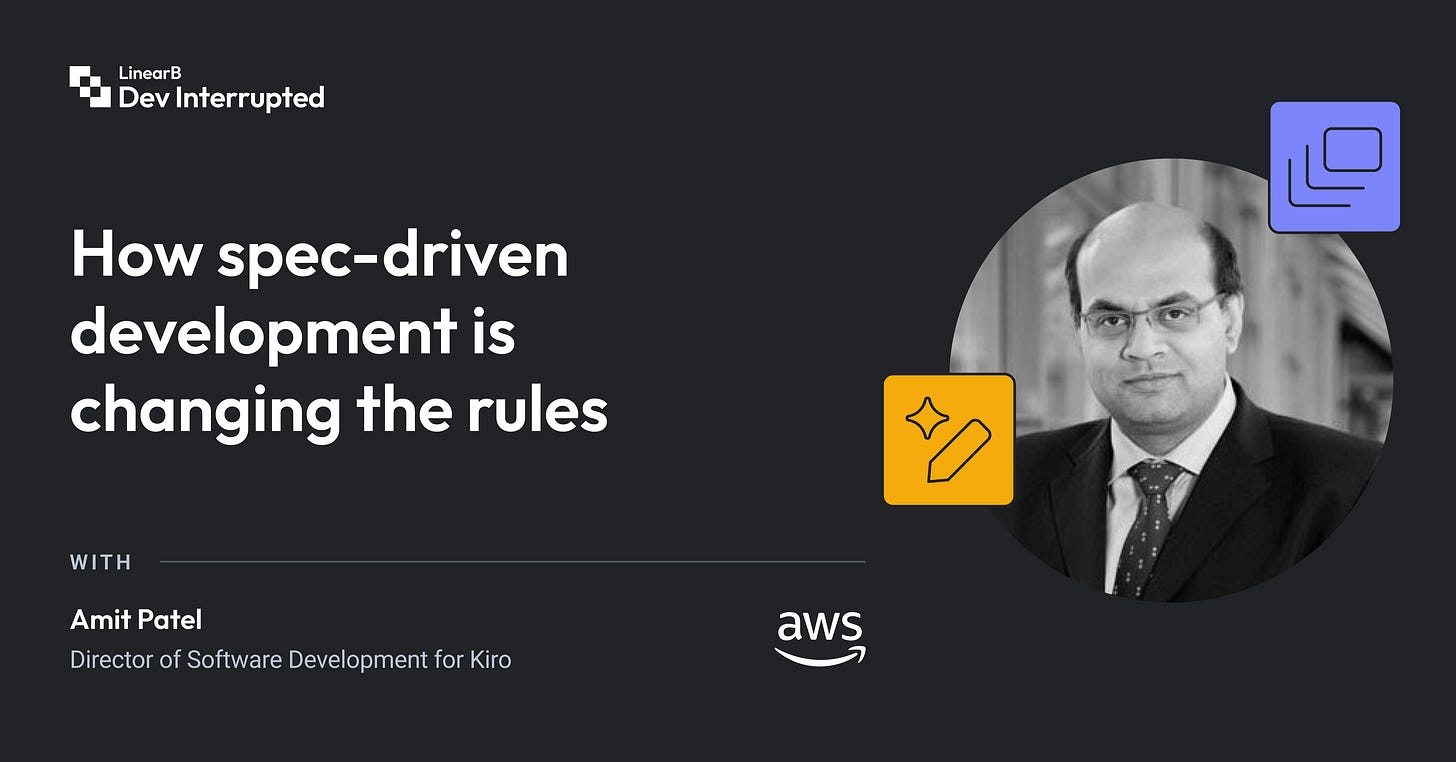How spec-driven development is changing the rules | AWS’ Amit Patel
Plus, are we in AI’s dial-up era? And the little vacuum that could.
What is “spec-driven development,” and why is this structured approach the key to unlocking complex AI projects? We’re joined by Amit Patel, Director of Software Development for Kiro at AWS, to explore this methodology. He explains why “vibe coding” in a chat window fails on multi-day initiatives: the AI (and the developer) loses context. Kiro solves this by turning requirements and design into a persistent, structured spec that acts as the agent’s long-term memory, enabling it to maintain context and build sophisticated applications.
Amit shares the inside story of how his team at AWS built Kiro from scratch in under a year. He reveals their virtuous feedback loop with internal developers testing nightly builds and providing real-time feedback. This rapid iteration, which included six full revs of the spec experience, was so successful that the Kiro team famously “used the tool to build the tool,” turning a multi-week feature into a two-day task.
“It becomes quite difficult to have enough context and enough memory as an individual developer to remember what you did yesterday or two days ago... I forget what I told the agent to do three hours ago, right? So one of the things that we wanted to do was to solve that problem in a more structured way.”
The Download
Still in the dial-up era, but at least the vacuum’s fighting back. 📻
1. We’re living in AI’s dial-up era ☎️
Remember the early days of the internet? Nowfal writes that AI today is having its own “1995 moment.” What does that mean? Well, it’s full of hype, destined for shakeouts, yet laying the groundwork for a future we cannot predict. Both optimists and pessimists have valid points, but the specifics of AI’s impact remain unwritten. AI will unlock job categories we don’t even have concepts for yet, much like how the internet birthed influencers and ride-sharing apps.
Read: AI’s Dial-Up Era
2. Fear is not a management strategy 😨
Stephane Moreau‘s article highlights how fear-driven managers create unsafe work environments, costing $36 billion in productivity globally. Moreau distinguishes between internal fear, which breeds micromanagement and distrust, and external fear, which encourages vigilance against competitive pressures. Psychological safety is key to team effectiveness, and understanding our fears can help us manage them better.
Read: Engineering managers are paralyzed by the wrong fears
3. The robot vacuum cleaner that just wouldn’t quit 🤖
Jowi Morales chronicles an owner’s battle with a smart vacuum that was remotely disabled by its manufacturer after they blocked it from collecting data. Instead of replacing it, the owner cracked it open, wired new hardware, and resurrected it with Python scripts. The story serves as a cautionary tale about the risks of IoT devices and the importance of treating them like strangers in your home. Take control back with a bit of engineering ingenuity.
4. Measure AI like it matters 📝
Are you struggling to prove the impact of AI in your engineering org? LinearB’s new AI Productivity Guide gives leaders a structured framework to track adoption and tie results to outcomes that matter: throughput, quality, and real ROI.
Inside: tactical advice on measuring adoption with developer surveys and AI acceptance metrics, plus five workflow automations to cut dev toil across the SDLC. Don’t settle for vanity metrics. Download your free copy today.
2 billion reasons to check your email security 🔍
Troy Hunt’s latest update on Have I Been Pwned reveals a staggering data dump of 2 billion emails and 1.3 billion passwords. The breach brings the total compromised accounts to 17.2 billion, highlighting the ongoing challenges of data security. Oh, and the engineering behind this service is a remarkable effort in privacy protection, offering users a chance to regain control over their digital identities.
Read: 2 Billion Email Addresses Were Exposed, and We Indexed Them All in Have I Been Pwned








